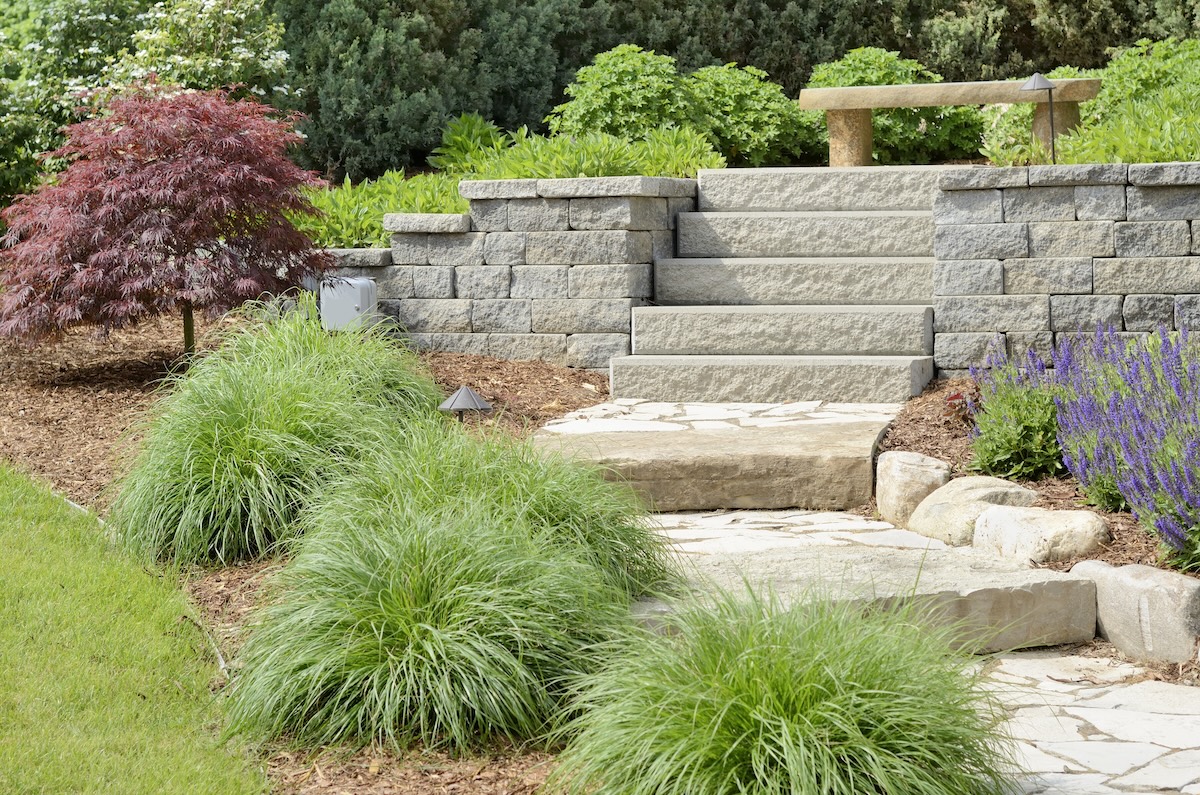

We may earn revenue from the products available on this page and participate in affiliate programs. Learn More ›
Every appealing yard incorporates both softscaping and hardscaping elements. It’s easy to focus on the plants, trees, and flowers that make up the softscaping while ignoring the importance of hardscape materials, such as stone, brick, concrete, gravel, asphalt, cinder blocks, wood, etc. that form pathways, the driveway, a deck or patio, outdoor kitchens, gazebos, fountains, and other features that help create an attractive and functional outdoor space.
Yet, conventional hardscaping often comes with an environmental cost, ranging from energy and water use to damaging local vegetation and wildlife. Fortunately, there are a number of sustainable hardscape materials to choose from that provide a variety of environmental benefits, such as minimizing chemical use, reducing stormwater runoff, and helping to lower one’s carbon footprint. Additionally, these materials help boost curb appeal, increase property value, and are often more cost-effective in the long run due to their durability and low maintenance needs. Consider the following benefits of sustainable hardscaping when you are designing or upgrading your landscape.
Save Water
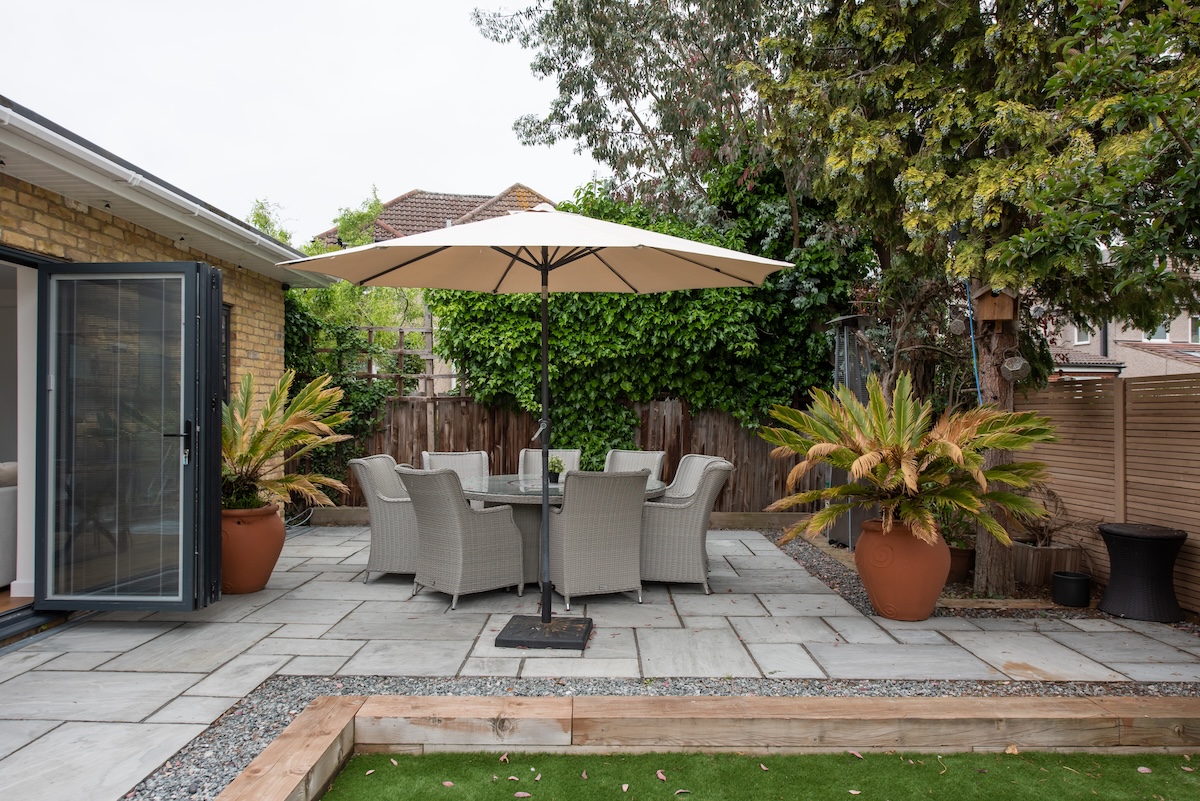
By choosing hardscaping elements like pathways, patios, decks, and retaining walls instead of grass, irrigation requirements are minimized, saving water. Additionally, hardscape surfaces like gravel and permeable pavers absorb rainwater and allow it to more easily enter the soil, preventing water from being wasted.
Minimize Chemical Use
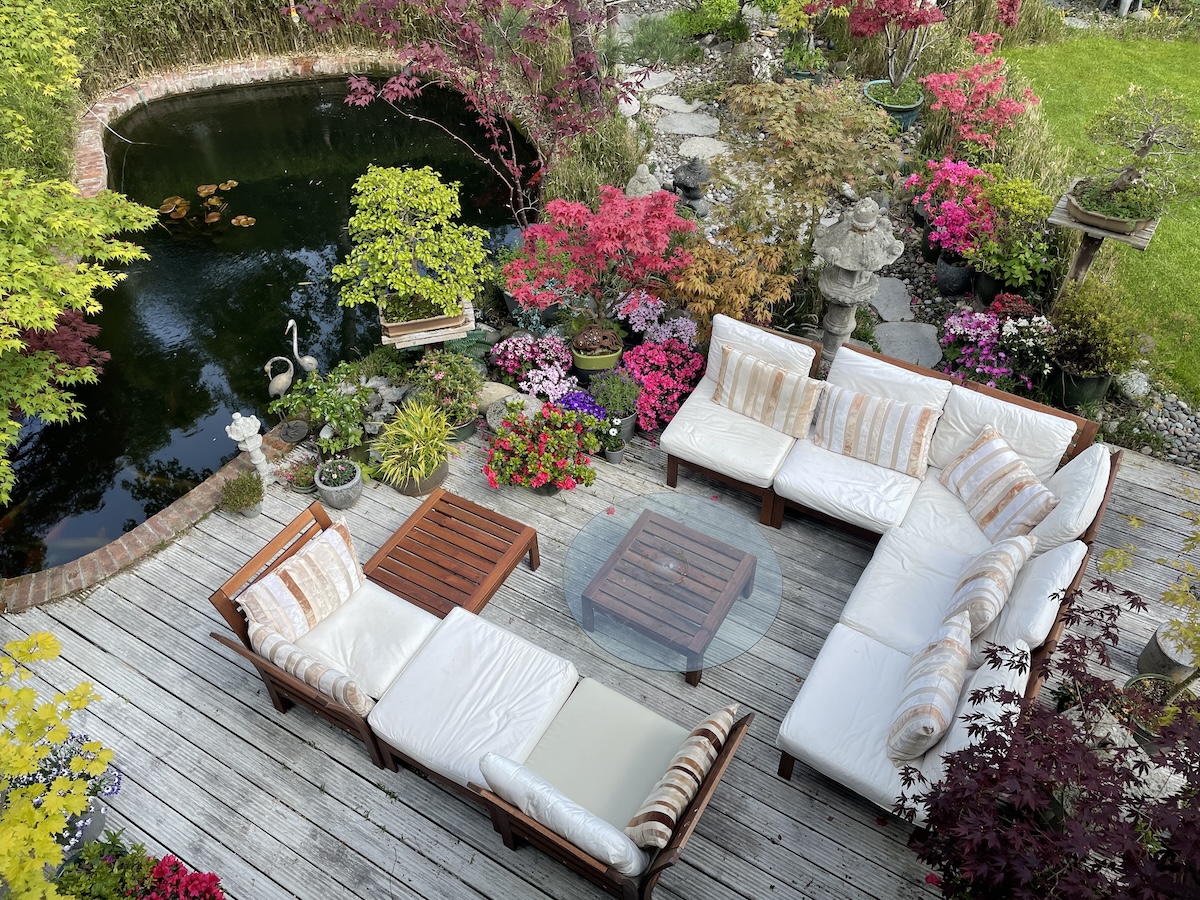
Replacing lawn with hardscaping options takes away the need for pesticides, fertilizers, and other harmful chemicals, which is an important aspect of sustainable landscaping. “Pesticides run off into our watersheds and greatly reduce the quality of water for humans and wildlife,” warns Daniel Cornacchia, president of Dancor Landscapes, which serves Southern Ontario, Canada. Additionally, sustainable hardscaping like permeable pavement helps filter out pollutants in the water. These materials also allow stormwater to drain into the soil so less ice is formed in cold regions. This means there is less of a need to use rock salt for de-icing, which can damage plants, pets, and the natural ecosystem.
Reduce Stormwater Runoff and Erosion
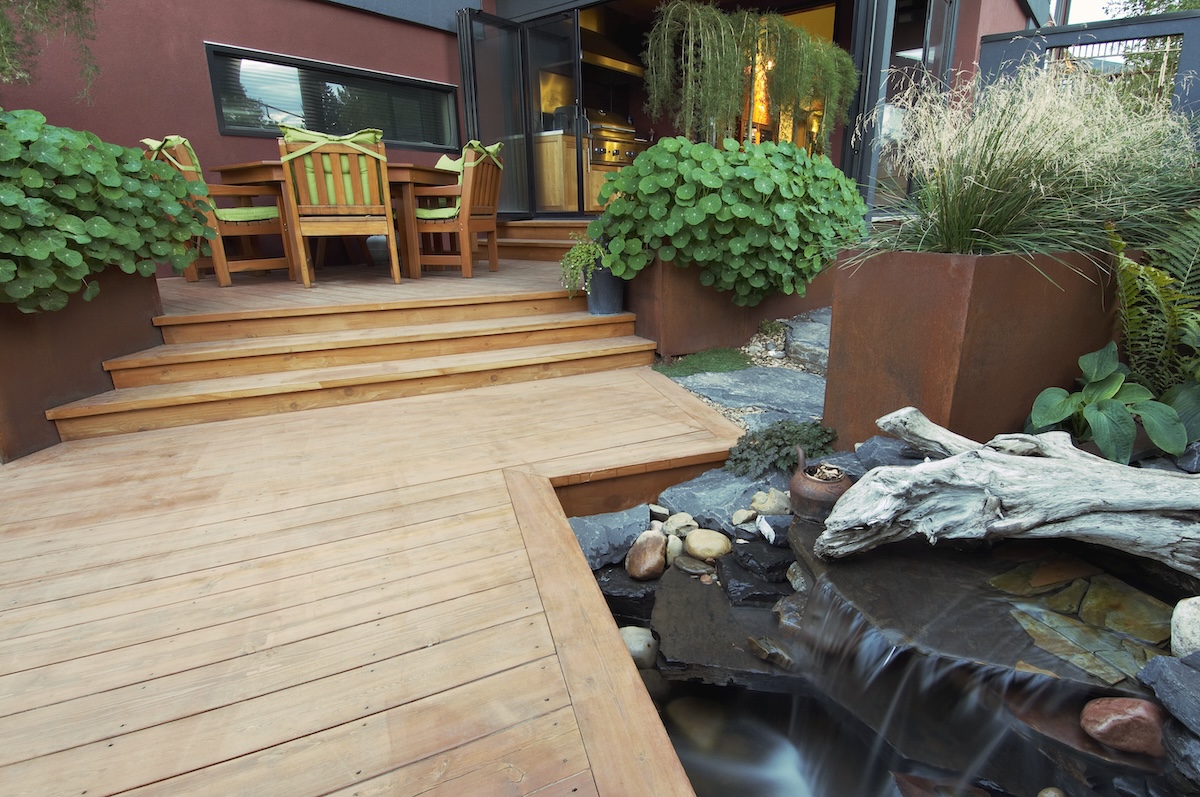
As more land is paved over, concerns about water runoff increase. Fortunately, sustainable alternatives to traditional pavement can help reduce runoff and erosion. According to the Environmental Protection Agency, such materials include pervious asphalt, pervious concrete, interlocking pavers, and plastic grid pavers, which allow rain and snowmelt to drain into the soil instead of the sewer.
“Permeable pavers not only allow you to manage stormwater on your property, but in some cases reuse it,” explains Cornacchia. “Traditional stormwater systems direct water over impermeable surfaces where it picks up all kinds of pollutants before it is dumped into detention ponds and local watersheds. Permeable paving reduces that and allows you to store and use that water for irrigation and non-potable uses.”
Gravel and mulch are also beneficial options to minimize runoff and erosion. “When it comes to reducing soil erosion, mulch is a popular method. It absorbs moisture a lot better than bare soil and therefore reduces the velocity of runoff,” notes Cornacchia. Gravel is naturally permeable and has the ability to filter water and remove contaminants.
Support Local Wildlife
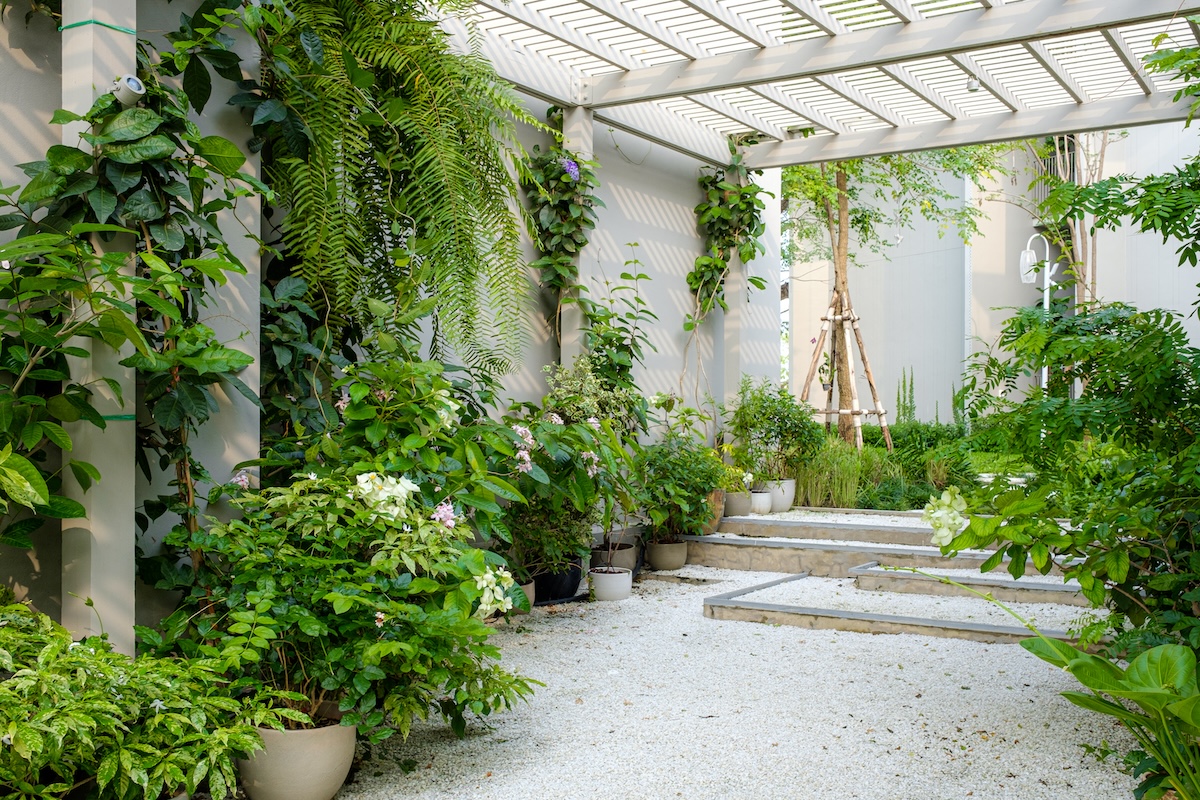
Permeable hardscape materials help improve the soil, allowing wildlife like earthworms, insects, ground-nesting bees, and microorganisms to flourish. “Mulch improves soil health,” says Cornacchia. “It decomposes to provide organic matter to soil. This mirrors the natural processes of forests where leaves and other organic debris break down to create soil.” Plant garden beds with native plants and trees, shrubs, and perennial flowers between hardscaped areas to create wildlife habitats and attract pollinators.
Also, hardscaping can help preserve natural habitats. While traditional landscaping may involve removing native vegetation to make room for lawn and gardens, hardscaping may reduce the amount of vegetation that is disturbed in order to protect the natural habitat for local wildlife.
Improve Drainage

Permeable pavers, which are porous so water can flow through them easily, are a great sustainable hardscaping option for homeowners, says Joe Raboine, VP of design for Oldcastle APG, a global network of manufacturers in the architectural products industry. “Any rain or water that lands on the permeable pavers will be absorbed back into the ground, making them a great way to reduce the burden on storm drains or be more eco-conscious in your outdoor living space,” says Raboine
Permeable pavers can also help improve drainage around a home and prevent further water damage, especially during and after heavy rainfall. “They reduce water runoff and help reduce localized flooding,” says Raboine. “You also can design permeable paver systems to harvest and recycle rainwater, adding to their sustainable attributes.” Finally, these types of pavers minimize water pooling, which can be problematic over time and attract unwanted pests like mosquitoes.
Lower Carbon Footprint
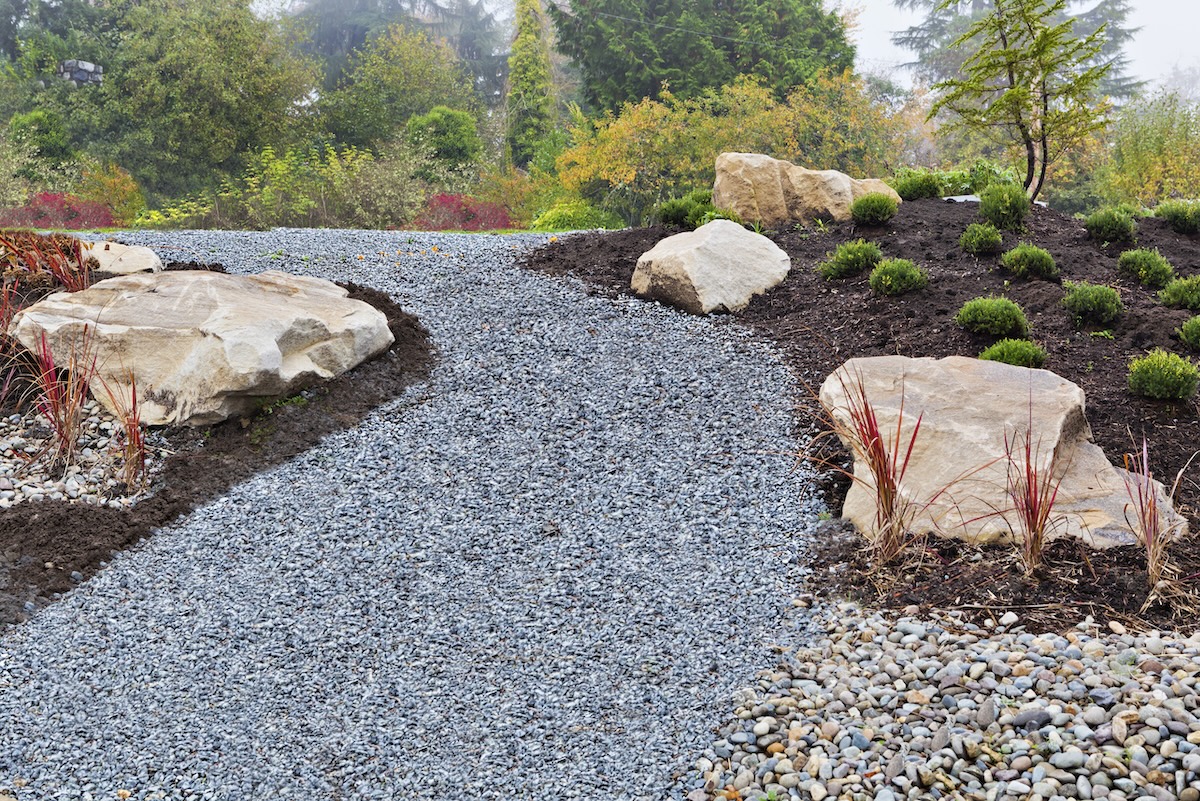
Choosing sustainable hardscaping materials provides a huge opportunity to reduce your carbon footprint—the amount of greenhouse gases produced by your activities, such as landscaping. Use locally sourced materials, such as purchasing from nearby quarries. “Locally sourced materials are beneficial because they require much less resources to get them from point A to B,” suggests Cornacchia. “They also provide local jobs to help support our economy.”
Hardscaping also cuts back on lawn and garden maintenance that depends on fossil fuels to operate equipment like lawn mowers, leaf blowers, and weed whackers. Finally, by choosing recycled or upcycled materials for hardscaping, carbon emissions can be reduced, since no additional construction is necessary. Some ideas include materials made from reclaimed concrete, stone, or wood; glass aggregates; pavers made from old plastic, rubber, or other materials; composite decking; and urbanite made from recycled concrete. These materials can be used for walkways, garden walls, fire pits, and other structures in the yard.
Boost Aesthetics

The natural look of sustainable hardscaping—such as wood, sand, and stone—is also aesthetically pleasing. “Permeable pavers give you the same look and feel as regular interlocking pavers but with way greater benefits,” says Cornacchia. “There are countless size, texture, and color variations available that will compliment any landscape or architectural style.” These types of materials tend to be better for the environment than manufactured materials, while also being durable, long-lasting, and attractive.
